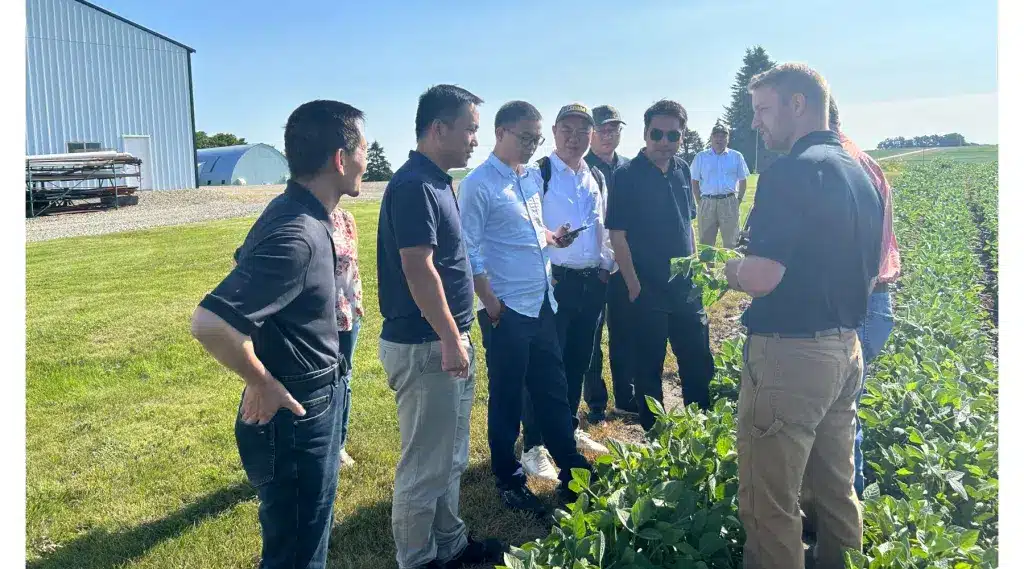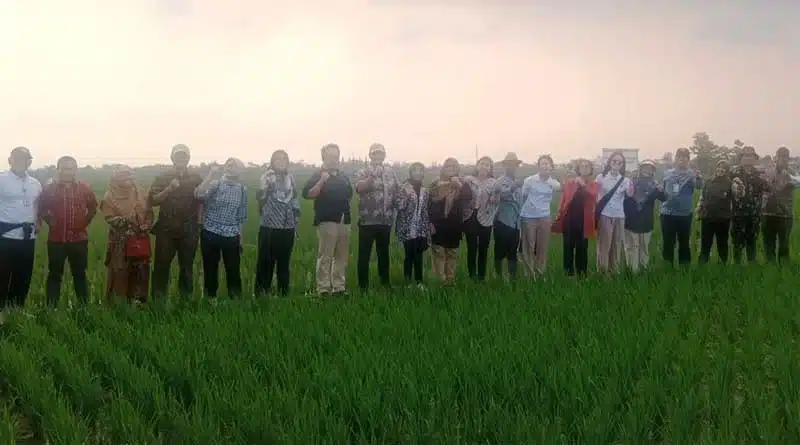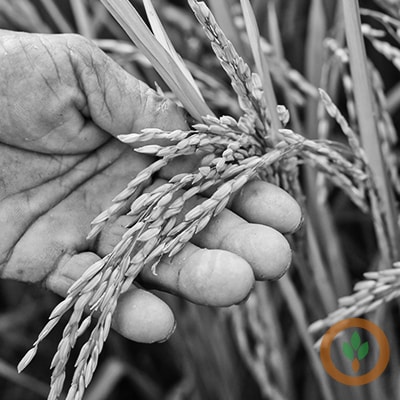Tags
ROCK STAR OF RICE: ARKANSAS STILL PRODUCING ALMOST HALF OF U.S. HARVEST
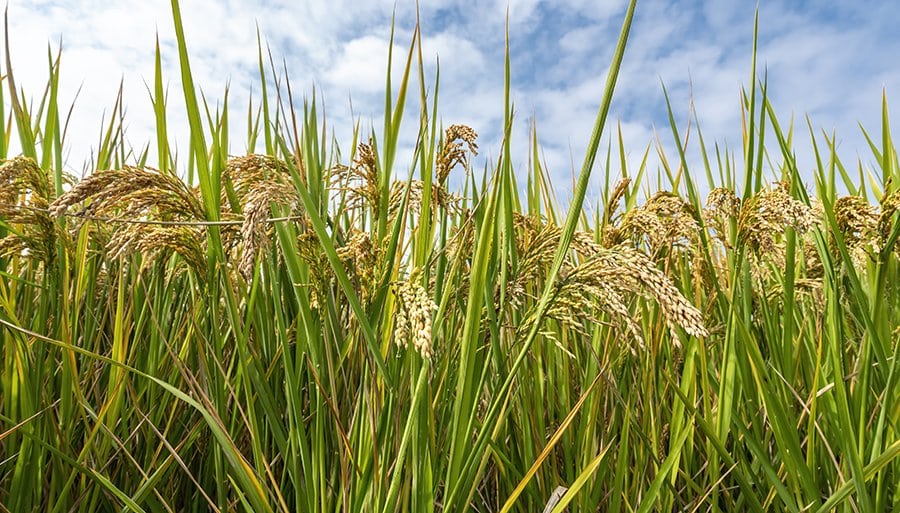
While there are scores of variables, such as weather, commodity prices, crop rotations, politics and equipment malfunctions, that may hinder Arkansas’ rice farmers, there is one constant that growers can count on.
The state will continue to rank first in the U.S. in rice production.
California is the second-leading rice producer in the country, and most of its rice is planted in the clay soil of the Sacramento Valley region. Louisiana is third, followed by Mississippi, Texas and the bootheel area of southeastern Missouri.
Arkansas farmers are expected to plant more than 1.2 million acres of rice this spring and produce at least 40 percent of the nation’s rice crop during harvest time in late August and September.
“Rice is a big deal,” said Arkansas Secretary of Agriculture Wes Ward. “When people think of Arkansas, they usually think of chickens first. They are amazed that the state creates nearly 50 percent of the country’s rice.”

Wes Ward
Last year, farmers planted more than 1.4 million acres of rice on Arkansas soil and produced about 168 bushels per acre. The record for rice production, nearly 170 bushels per acre, was set in 2021.
The primary crops are long- and medium-grain varieties, and a majority of rice crops are grown in the eastern half of the state because of the fertile Delta soil there.
Ward said production could be slightly less this year, only because farmers may rotate crops and, instead of planting rice, they may choose corn or soybeans.
Of course, weather plays a major role in predicting rice production. Droughts can ruin crops, and Arkansas has seen its share of dry summers over the years. It is expensive enough, farmers say, to irrigate crops with adequate water during normal seasons.
Ward said Gov. Sarah Huckabee Sanders’ recent executive order to review the Arkansas Water Plan to assess water usage and demand should greatly help rice farmers. Officials will review the plan and develop long-term goals to create sustainable water usage, he said.
Rice farmers begin studying market forecasts during February to determine if it is lucrative to plant the crop.
“A lot of the decision of what to plant happens now,” said Kelly Robbins, executive director of the Arkansas Rice Federation, an organization that provides information to rice growers and markets the product both nationally and internationally.

Kelly Robbins
“Farmers need to know if rice prices are good and how long they will stay that way,” he said.
Politics also plays a role in production. International embargoes on rice, such as one issued in 2018 about exporting rice to China, hindered Arkansas farmers.
“China is a difficult market,” said Ward, who was named the state’s third secretary of agriculture by former Gov. Asa Hutchinson in 2015 and then reappointed to the position by Sanders in 2023. “They are protective of their rice. They take a very protective approach to importing rice into China.”
One way to combat that is to market rice in other countries. Arkansas rice is now heavily exported to Central America and Mexico. About 50 percent of the state’s rice goes outside of the country, Robbins said.
The Rice Federation also markets rice within the country. September is deemed National Rice Month, and festivals, including the annual Arkansas Rice Festival in Weiner, honor that by promoting the product.
New markets for specialty rice have also opened up in recent years, including varieties grown specifically for the production of sake, a spirit native to Japan. The Delta produces some of the most coveted sake rice in the world and has even spawned Arkansas’ first sake producer, Origami Sake in Hot Springs.
The specialty rice is grown only in Arkansas on land that is strictly farmed for rice and has no yearly crop rotation.
“It’s a slow go,” Robbins said of the length of time to grow the specialty rice, “and it doesn’t produce a high yield, but it’s the only type of rice grown in the country.”
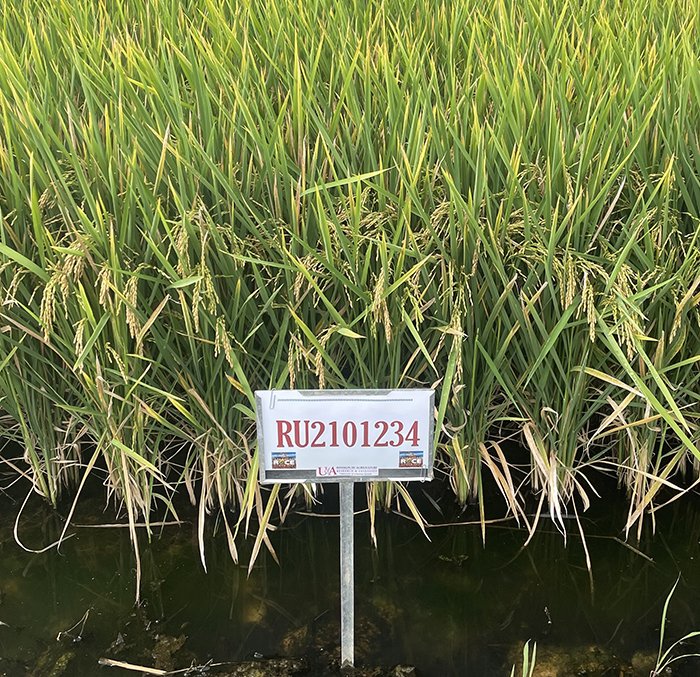
A UA Division of Agriculture research field in east Arkansas.
(Photos provided)
Production has increased vastly since the first rice was planted in Arkansas 120 years ago. Nebraskan entrepreneur W.H. Fuller traveled to southwest Louisiana on a hunting trip in 1896 and saw locals there growing rice in Crowley. Fuller, who had moved to the Stuttgart area in eastern Arkansas, realized that the Louisiana clay soil needed to grow the rice was similar to that found in Arkansas.
“We had good rice country if we had the water,” Fuller said of Arkansas, according to a 2005 article in Arkansas Historical Quarterly. Fuller returned to Crowley to learn more about rice and making wells for the crop. In 1904, he was proclaimed the “master of rice farming,” and he and his brother-in-law and sister-in-law harvested 5,000 bushels on the state’s first rice farm.
Now there are 1,877 rice farms that pump $1 billion into the state’s economy. They have created 25,000 jobs for farmers, rice mill operators and workers, transporters and others.
While rice is a massive economic driver in the state, there is also a human side.
Jennifer Jones, who has farmed rice on 6,200 acres in southern Jackson County with her family for 30 years, writes a blog about her agricultural adventures.

Jennifer Jones
“I hope to give you a glimpse of what a true Southern family row-crop farm looks like,” she states in the introduction to her blog at FieldGoodLife.com.
“I put the content out there for everyday folks,” she said. “A lot of people don’t realize all that goes on in farming. Some are far removed from the agriculture world.”
James said she now works on the business side of the farm by preparing taxes, checking market forecasts and fertilizer prices, debating about what crops to rotate, and developing her yearly operating budget.
She has not made any blog posts recently because she has been busy, she said, but she hopes to write more soon. She also wants to use her forum to promote women in the agricultural industry.
In addition to farming, she serves on the Arkansas Rice Federation and the Riceland Foods boards.
“I want to be here on the farm,” she said, “but I have an itch to advocate and influence policy. When we go to national rice meetings and we say we’re from Arkansas, it’s like being a star. We’re a big thing nationally.”
https://armoneyandpolitics.com/arkansas-still-producing-almost-half-of-us-rice-harvest/Published Date: April 17, 2024





